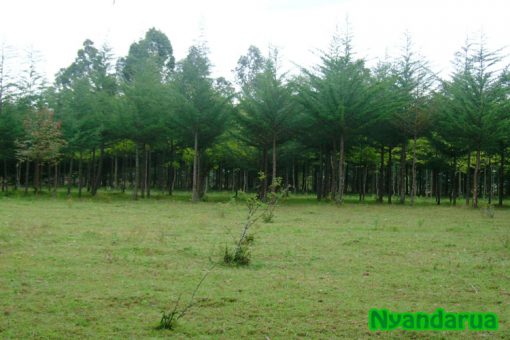The lush green pastures also meant high milk yields. The cows were well fed, producing plenty of milk. My farm usually produced two 50 liter milk cans from eight to fifteen cows. The milking started at 4 am. We had two farm workers, but as long as we were home, my brothers did the milking to give the workers a break.
The alarm clock was set for 3.30am. The boys had a system that worked. They shared out the milking chores making sure every task was covered. They started the fire to warm the water for washing the cow udders (mukamo). As the water was warming, they opened the gate to let the cows into the compound from the nearest paddock where the cows usually stayed for the night. That nearest paddock is not a small enclosure. It is a five acre area next to the home compound where the cows grazed and stayed the night. In that ungodly hour of the morning, my brothers rarely found the cows in one spot. The cows were spread out all over the five acre paddock.
With flash lights and hurricane lamps, they walked the full breadth of that paddock, rounding up the cows and drove them to the home compound. This was done at that hour every morning regardless of the weather. Some mornings they endured heavy downpours, on others, the fog was so thick it was near impossible to find the cows. Frost (mbaa) was another element they had to endure. Gumboots came in handy for protecting their feet from direct contact with the frost. Frost on bare feet was numbingly painful, it was like stepping on thorns.
While two of the boys were rounding up the cows, others were busy filling up the troughs (miharati) with animal feed, positioning the milking stools (njung’wa), getting the milking buckets (ndoo cia iriya) ready, positioning the 50 liter milk cans (mitungi ya iriya) and tying cheese clothes (gitambaya kia iriya) over the mouths of the milking cans ready for the milk to be poured in after each cow was milked. They brought the fresh warm water and terry cloth for cleaning the cow udders, and positioned the milking jelly (maguta ma gukama) within reach of whoever will be milking.
In the meantime, the boys who brought in the cows from the paddock held the herd in one corner of the compound, guiding one cow at a time to the milking shed (njooku) as signaled by those at the milking shed. Each cow had a name it responded to: Kadogo, Reveti, Susana, Churchill, Jaramuge, Wangai (honoring our veterinary officer who made rounds all over the settlement scheme on his bicycle), Forana, Jaaki and other such colorful names. Whenever a cow heard its name called out, it recognized it was its turn, so it broke away from the herd and marched towards the milking shed. The routine had been mastered by both animals and humans, making the milking chore somewhat manageable. When the milking of each cow was done, its milk was emptied directly into the 50 liter milk cans, pouring it through the cheese cloth that was tied over the mouth of the cans, sifting out any contaminants like fur (guoya) that may have dropped into the milk during the milking process. One by one, the cows were ushered into the milking shed, and once done, they were led out of the compound and back into the paddock, while another cow took its place in the milking shed, until all the cows were milked, all 10 or 15 of them. This tedious task went on for an hour or two until all the cows were milked and safely back in the paddock. All this was happening in near pitch darkness with only one hurricane lamp hanging over the milking shed, barely illuminating half the shed. But my brothers had mastered the milking routine so well, they could do the job with their eyes closed. It was an operation that was skillfully choreographed with military precision. There was no room for error and these young men had mastered the task to perfection. My parents must have been very proud of them but they never said it. Parents never complimented their children back then. They gave you food, clothing, shelter and an education and that was enough to let you know they loved you and appreciated you. Talk is cheap.
Milking was done twice daily, morning and evening. KCC (Kenya Cooperative Creameries), the only buyer of Nyandarua milk only accepted milk deliveries in the morning before 9am. It was therefore left to the Nyandarua farmers to keep their evening milk supplies overnight, mixing it with the morning milk before sending it to KCC. Luckily for Nyandarua, the freezing temperatures were ideal for keeping the milk very cold and fresh through the night. It was natural refrigeration at its best.
The milk from the previous evening formed a thick layer of cream, typical of Nyandarua milk due to its natural richness. My family skimmed the layer of cream and mixed it with milk for our tea. Visitors to Nyandarua never forgot the delicious creamy taste and richness of our tea. For us who grew up in Nyandarua, we were so used to that rich creamy taste in our tea, we never thought anything much about it, until we tasted tea outside of Nyandarua and wondered what was wrong with other people’s tea; it tasted watery, almost bitter. The difference was the milk. I can still taste the difference, making my siblings and I appreciate where we come from even more.
The cheese cloth was ideal for filtering out any traces of cream from the overnight milk stock, making it blend with the morning stock consistently. And with that, the milk was ready for delivery.




